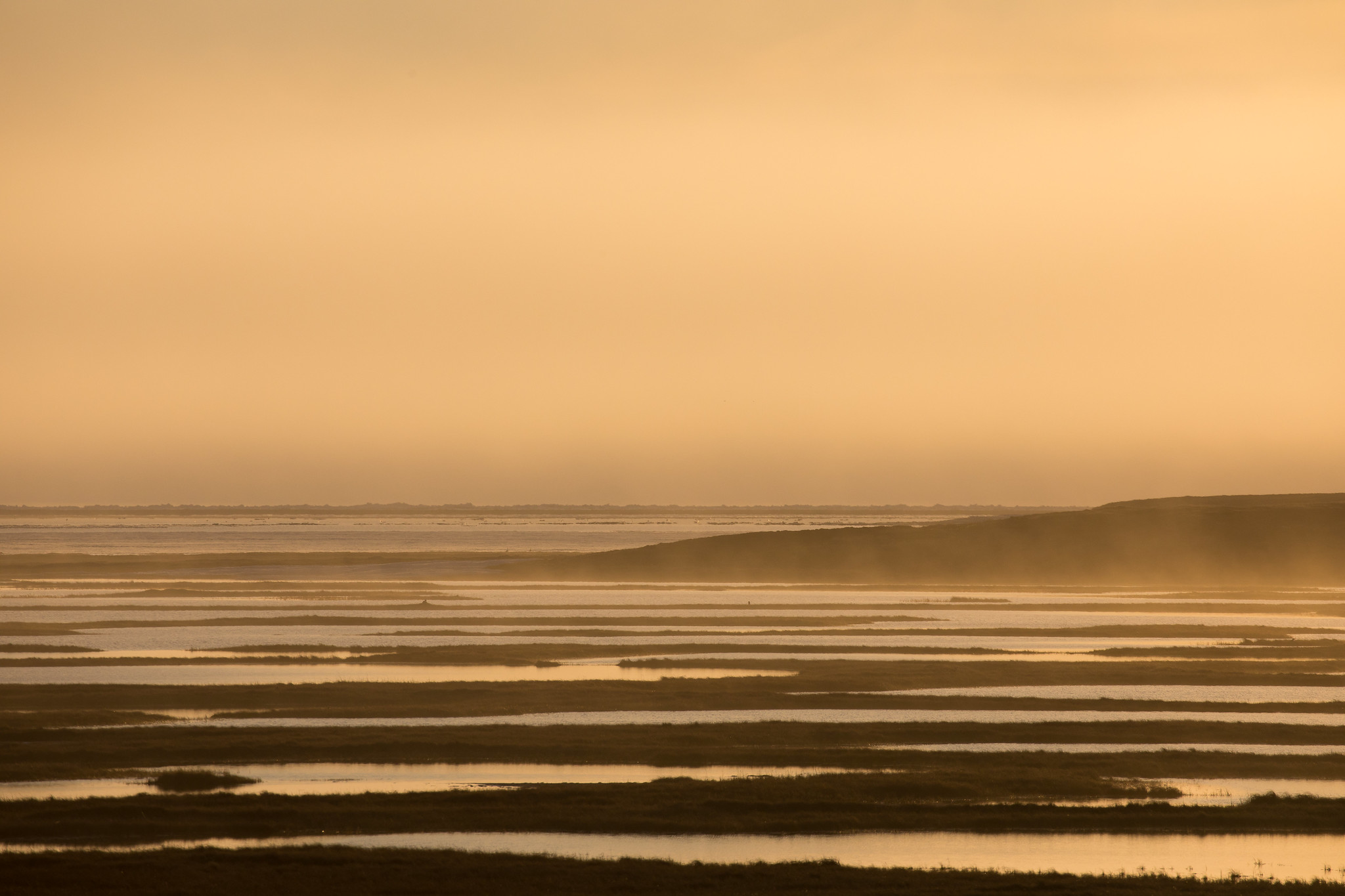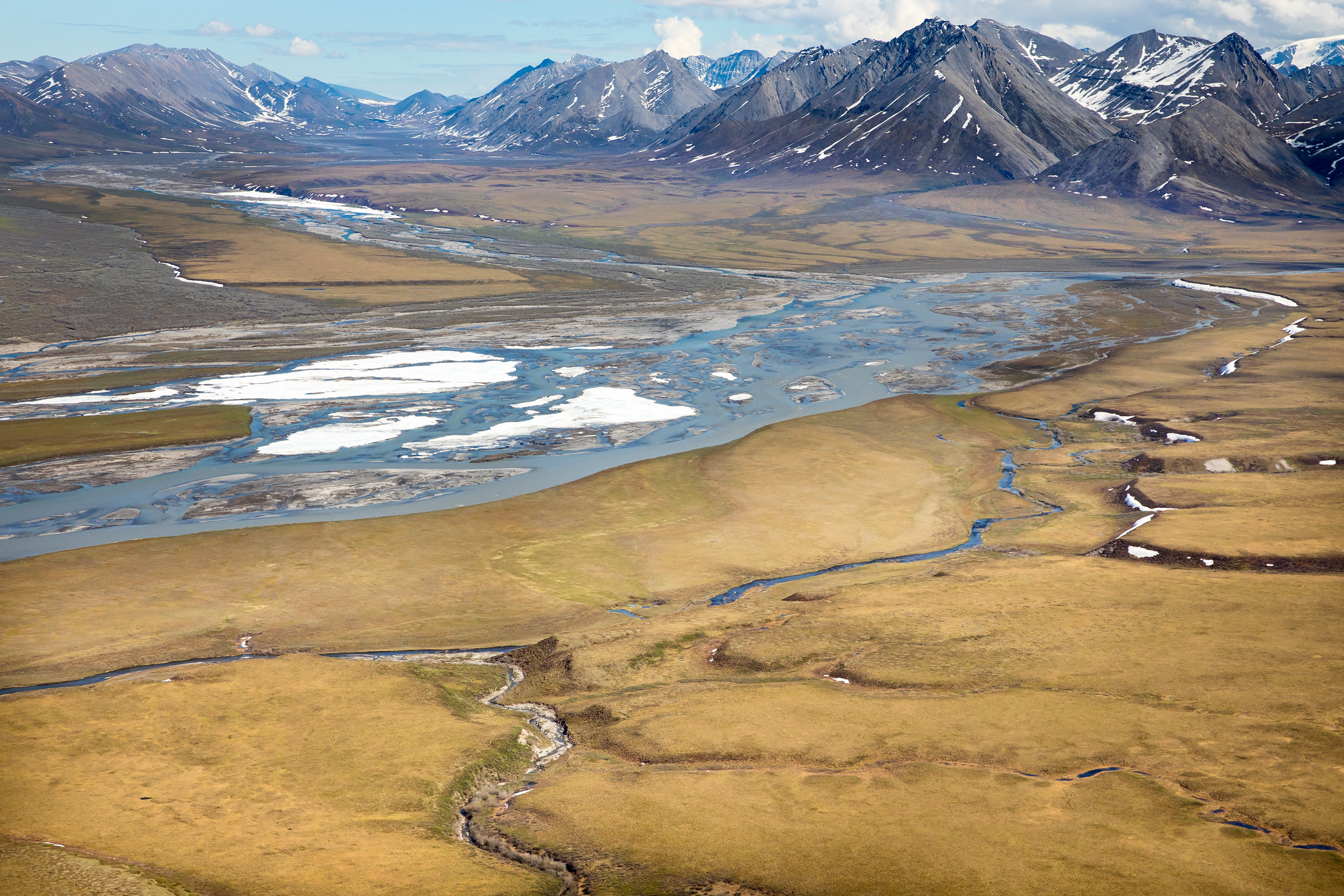The Trump administration proposes allowing seismic exploration in Alaska’s Arctic refuge this winter
The plan, released on the eve of the election, has several hurdles to overcome if it is to go into effect this winter.

The Trump administration on Friday released a plan for conducting seismic surveys this winter in the coastal plain of the Arctic National Wildlife Refuge, an important precursor to exploration drilling.
The release comes less than two weeks before a presidential election that might force a change in administration, and with an especially short comment period.
The Kaktovik Inupiat Corp. is seeking permission to conduct the seismic survey on the eastern part of the refuge’s coastal plain, according to its application and plan of operations, posted by the U.S. Bureau of Land Management.
The corporation, owned by Inupiat people of the village of Kaktovik, plans for the seismic work to be done on the 92,000 acres of Native-owned land within the refuge boundaries and on an additional 450,592 acres of federal territory in the refuge, the application says.
“The purpose of the proposed seismic exploration is to acquire quality, high resolution seismic data, using vibroseis techniques to identify potential oil and gas reserves,” the proposed action statement says.
[Trump administration approves oil leasing in Alaska wildlife refuge]
KIC’s partner, SAExploration, would operate the seismic program, according to the application. The program would start this winter. SAExploration was the lead applicant in a previous seismic plan submitted in 2018 that would have resulted in surveys across the entire 1.6 million-acre coastal plain.

The public has 14 days — until Nov. 6 — to comment on the new KIC-SAExploration plan, the BLM said on Friday.
The timing and the quick turnaround drew sharp criticism from environmentalists, who pointed to scientific research about long-lasting damage that seismic surveys would inflict on the tundra, permafrost and wildlife in the region.
“Trump is dead set on destroying the irreplaceable Arctic National Wildlife Refuge, just to give one last gift to the fossil fuel industry,” Kristen Monsell with the Center for Biological Diversity Action Fund said in a statement. “Make no mistake, the only reason they are rushing this now is because they know their time is running out. But time is also running out to save polar bears and our climate, so we’ll fight this reckless attack with everything we’ve got.”
“The submission of this application and BLM’s choice to act on it so close to the election shows how desperate the administration is to turn over one of the nation’s most sensitive landscapes to the oil industry,” Lois Epstein, Arctic program director for The Wilderness Society, said in a statement. “The federal government is recklessly rushing and irresponsibly denying the public adequate time to assess the application and submit comments. The public, particularly Indigenous communities that would be most impacted, have a right to raise their concerns and engage in this process.”
Officials with the BLM or the Interior Department did not comment on the timing of the seismic application.

In its plan of operations, KIC said contractor SAExploration will employ “procedures to minimize environmental impact caused by seismic operations.” Among the planned procedures are technological advances to reduce the amount of equipment on the tundra, use of rubber-tracked, low-groun-pressure vehicles to minimize compaction of the tundra, and modifications of seismic equipment to minimize the risk of oil or fuel spills, the plan said.
There are some legal hurdles that KIC and the BLM must clear before the seismic program may begin, said Bridget Psarianos, an attorney with Trustees for Alaska.
One is a permit from the U.S. Fish and Wildlife Service for incidental harassment of polar bears, she said.
By law, that application must be published in the Federal Register and subject to a 30-day public comment period.
Polar bears are managed under both the Marine Mammal Protection Act and the Endangered Species Act, laws that bar disturbances or other harm absent special permits.
The previous seismic plan, submitted by SAExploration in partnership with KIC and the Arctic Slope Regional Corp., foundered when the applicants were unable to secure permission to disturb or harass polar bears.

Another hurdle, Psarianos is, would be a formal environmental assessment on the seismic plan. The BLM is required to conduct one, as the agency promised to do with the 2018 plan, she said. That plan stalled and no environmental assessment was released. However, there is no requirement to take public comment on the environmental assessment, she said.
The BLM’s website suggested that an environmental assessment is in progress.
Time appears short to accomplish all those steps by the end of December, when KIC seeks to start the seismic program, Psarianos said.
“We have serious questions about whether the administration can comply with all the legal requirements in the timeline that they’ve laid out,” she said.
Yet to be determined is the date of an ANWR lease sale. The BLM has not announced any specific date.
Selling leases requires another set of legally mandated steps, including a formal call for nominations, which requires a public comment period of at least 30 days, and a formal notice of sale, which must precede a competitive auction by at least 45 days.
For the seismic plan, one notable change since 2018 is the position of SAExploration. In the new plan, the company’s status as contractor contrasts with its earlier status as the applicant.
Since it filed the 2018 application, SAExploration has encountered legal and financial troubles. The company on Oct. 9 was charged with fraud by the Securities and Exchange Commission for allegedly falsely inflating its revenues. The former chief executive, Jeffrey Hastings, was arrested in September in Anchorage and indicted, along with other former SAExploration officials, by federal prosecutors in New York for allegedly fraudulent activities. And the company, which is now under new leadership, filed for bankruptcy reorganization in August.
While the Trump administration moves toward ANWR exploration, two Canadian banks have joined several U.S. and European financial institutions in shunning it.
The Bank of Montreal and the Royal Bank of Canada this month both released policy statements that single out ANWR development as an activity for which lending is prohibited.
The Bank of Montreal’s responsible lending statement says the company’s intention is “to avoid direct financing for any project or transaction that involves exploration or development in the Arctic National Wildlife Reserve.
The Royal Bank of Canada’s policy statement has similar wording. “Due to its particular ecological and social significance and vulnerability, RBC will not provide direct financing for any project or transaction that involves exploration or development in the ANWR,” that bank’s statement says.
The Gwich’in Steering Committee, representing Gwich’in Athabascan people in both Alaska and Canada, and Gwich’in tribal governments on both sides of the border have campaigned for such actions from financial institutions. In an Oct. 22 statement, Gwich’in officials in Canada called for more institutions in that country to join the movement.
“We believe it is only a matter of time before other Canadian banks step up and acknowledge that our sacred lands are no place for drilling,” said the statement issued by the Vuntut Gwitchin Government and Gwich’in Tribal Council.
This story has been corrected to clarify that Bridget Psarianos stated that an environmental assessment is required for the seismic plan but that public comment on that assessment is not.